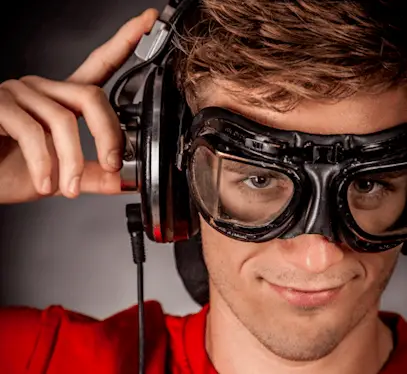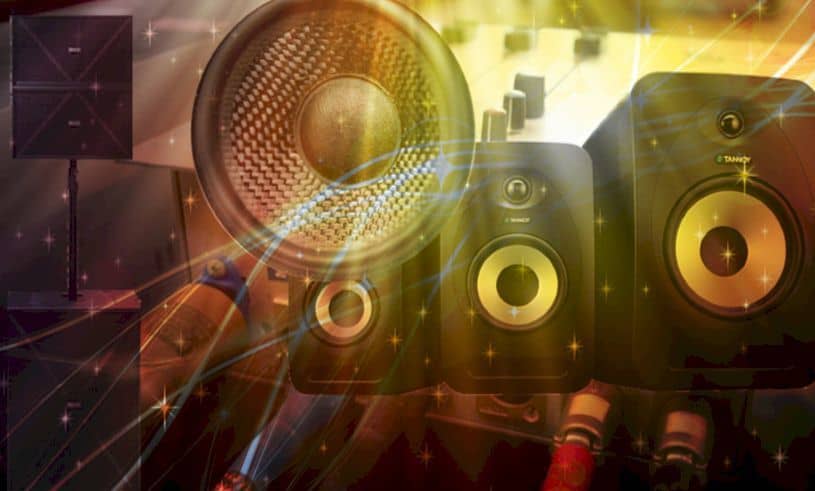Establishing a good connection between the components is essential in audio system set-up. This helps produce a clear and high-quality sound. Mixers help improve the quality of audio signals and dynamic range. To get the best audio output, learn how to connect powered speakers to mixers properly.
Contents
The Powered Speakers
Powered speakers are also called active speakers or self-powered speakers. These are loudspeakers that have built-in amplifiers. Active speakers are portable and perfect for small spaces.
Advantages of Powered Speaker
Aside from the ones mentioned above, here are other advantages of a powered speaker
- Consumes less power.
- Produce better sound quality.
- Cheaper.
- Easy to use.
- Won’t burn out your mixer.
- Can be connected to source components.
The Mixer
It is the main component of PA (Personal Address) systemIt is the control panel that receives and manipulates audio signals. Audio mixers are used in recording studios, concerts and films/televisions. They are also used in different occasions and social gatherings. Other functions of the mixers include:
- Control the loudness of the speaker
- Change the tone quality of the sound
- Change the dynamics and timbre of the sound
The Three Types of Mixers
- Analog Mixers – change the tone and volume of audio signals using analogue circuitry. Analog mixers also add character and warmth to the audio.
- Digital Mixers – use digital signal processing technology in audio manipulation. Digital mixers are more advanced than analog mixers.
- Powered Mixers – have built-in amplifiers. They mix both analog and digital signals.
Parts of the Mixing Board
The main parts of a mixing board are:
- Channels. These are the signal paths. The number of input channels indicates the number of sources you have. Normally, each channel contains the following buttons:
- Gain – refers to the loudness of sound. It is the input level of the clips.
- Fader – adjusts the audible signal from the channel.“L-R”, “1-2”, or “3-4” – or Left/Right selector routes. This is used in stereo monitoring.
- Aux – sends a secondary feed of audio signals to another destination.
- PAD – or Passive Attenuation Device. It prevents distortion of sounds as they pass through the channel.
- PAN – or potentiometer. It sets the Left/Right position of the channel in the stereo field.Phantom Power – used for condenser microphones.
- EQ – or equalizers. This button adjusts the precision and flexibility of sound frequencies.
- Mute – disables a track’s audio. This button does not disable the whole audio system – it just puts the mixer in “solo mode”.
The Master Section. This is also called the master volume. You can adjust the volume using this button.
The Aux Bus. This is the circuit that sends audio signals to other devices.
How to Connect Powered Speakers to Mixers
To successfully connect powered speakers to your mixer, follow these steps:
1. Know your mixer’s connection.
This will help you avoid interference or noise. The two types of connection are balanced and unbalanced lines.
- Balanced lines – have the ability to reject induced noises. They are ideal to use for long cable runs. TRS and XLR jacks transmit audio signals from a balanced device to another.
- Unbalanced lines – more susceptible to induced noise problems. Unbalanced connections should be kept short to reduce noise and interference.
2. Position your equipment.
Proper positioning of the components is important to achieve the best audio amplification. Follow the following tips:
- Place the powered speaker in front of the audience. Make sure the speaker is in front of all the microphones. This will avoid interference.
- Place the mixer at the back of the powered speaker. Do not let the two components touch each other.
3. Check your equipment.
To know if your mixer and speakers are functioning properly, check them first. Start with the mixer. Make sure all the channel buttons – EQ, Master Volume, etc. are down. Then turn on the power button. Check if the buttons are well-functioning. Then turn off the power button. Follow the same procedure when checking the powered speakers.
4. Lay out the speaker cable.
Speaker cable connects speakers to other sources. If possible, keep the cable short to prevent interference. Coil the excess cable at the bottom of the speaker stand to prevent accidents.
5. Connect the speaker to the mixer.
Before connecting, make sure the two components are turned off. Connect the speaker to the stereo output of the mixer. Then turn on the speaker and the mixer.
6. Connect the source components to the mixer.
Source components are the most important parts of the audio system. These include CD-DVD players, cellphones, and laptops. The sound quality of the source component’s audio output defines the ability of a stereo system.
Follow these steps to connect your source component to the mixer:
- Plug one end of the cable into the headphone jack of your device.
- Plug the other end of the cable into the “Line-In” port of the mixer.
- Play any music on your device. This should produce a sound.
Put the mixer’s Gain, Fader, and Master Volume button to minimum levels. This will prevent unexpected noise. When using a cellphone, put your device in airplane mode to avoid interference.
8. Check and adjust the sound output.
Adjust the volume, treble, and bass using the equalizer controls. Mixers commonly have a separate equalizer for each channel. Some mixers have a global equalizer that affects the whole mix.
9. Turn off the mixer and the speaker.
Turn off the mixer first – then the mixer. Put all the buttons in minimum levels.
Related: Mixer vs Audio Interface
Powered speakers are more convenient to use compared to other kinds of speakers. They don’t need amplifiers to produce an audible sound. Mixers are audio components that enhance the quality of the audio output. These devices can make musical experience more fun and exciting. If you connect powered speakers to mixers, you can manipulate the sound well. For successful connecting, follow the steps provided above. Have fun!

HI, John Andrew here. I’ve been an audiophile since I was a little kid. I’m an original member of myaudiolover . It emerged as a way for me to share my passion and knowledge for audio technology. If you’re looking for tips, techniques, and insights about audio-tech, that can enable your productions that professional edge, then MyAudioLover is the place for you!


For someone with absolutely no Sound, Audio or Engineering background, This is so vey helpful ! ! Have saved your link ! Very clear and detailed ! You have put it down in writing as well as with a Video ! Wow !! Thanks much !
Hi
I have a pair of Rokit G4 7inch studio monitors. I also have a Numark MK2 mixer.
I have tried every possible was to plug it altogether and cannot get any sound.
Could you please help – I have cables XLR-RCA. I feel there is a master missing or something. I purchased over the phone from the dealer and feel as though something is not right
Could you please help me
Thanks
Melissa
9. Turn off the mixer and the speaker.
Turn off the mixer first – then the mixer.
You said mixer both times in that second line.